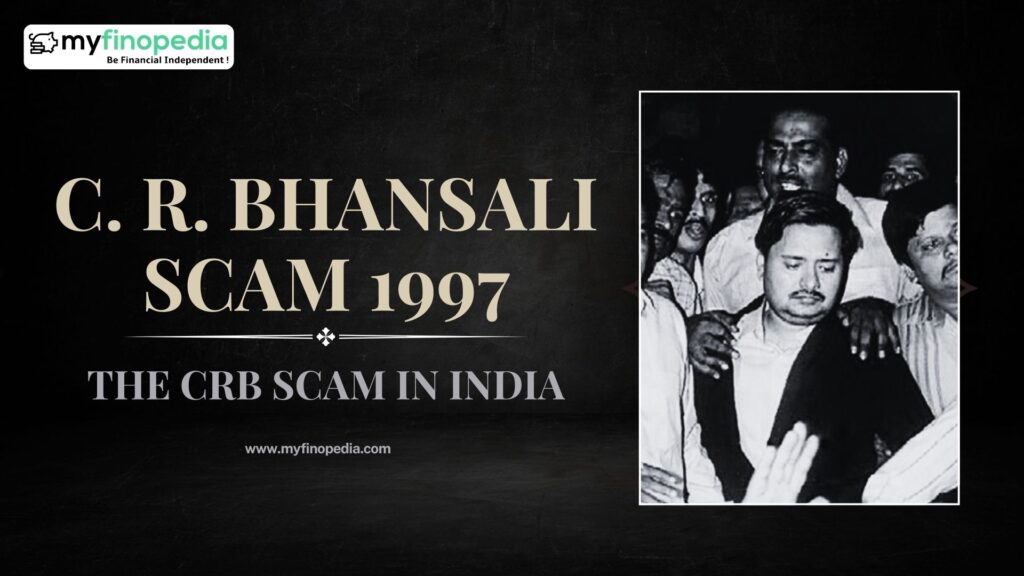The world of mutual funds is full of opportunities, but it is sometimes reported to be involved in risks & unpredictability. Investors have learned this the hard way through numerous scams that have left them high & dry over the years. One of such memorable scams is the CRB scam that took place in the 1990s and left many with a bitter taste of the investments in the mutual funds.
Here, we’ll dig deep into the details of the CRB scam, exploring how it was executed and the impact it had on those caught up in its web.
Backdrop of the CRB Scam
In 1996, the Indian Stock Market was rocked by yet another massive scam worth 1200 crores. Hailing from Sujangarh Rajasthan, Chain Roop Bhansali was a middle-class trader & Chartered Accountant who executed the scam & left many people awestruck. Over the years, he gained many other degrees and made a lot of money, but he found it hard to get proper recognition in Kolkata and established a new private limited company ‘CRB consultants’ in New Delhi, 1985. Therefore, he joined one of the country’s leading registrars of companies, where he was caught short-charging clients and had to leave.
In 1992, he altered CRB Mutual Fund & CRB share custodial services, along with 133 unlisted companies & subsidiaries. These were the bedrock of his fraudulent transactions. Leveraging the boom in the Non-Banking Finance Company Sector (NBFC), Bhansali took all the advantages to execute his fraud by taking advantage of Ponzi schemes. In these schemes, he used to lure investors to pay as earlier investors and collect funds from recent investors. The CR Bhansali Scam became the first-ever Indian scam on this type of scheme and is considered one of the biggest mutual fund scams India has ever witnessed.
The Scam & Outcome
In 1996, the media exposed the fraudulent activities by the CRB group banning Bhansali from launching any other new schemes. The fraudulent activities between 1992-1996 managed to raise close to Rs. 900 crore through fixed deposits, debentures & bonds transferring the funds in his non-existing companies. Failing to repay all the high-interest returns back to the public, he also borrowed multiple loans and tried to generate profits using his own money to buy back his shares or cross-sharing between existing funds. His auditors also helped him to cover up his fraudulent activities. He also maintains relationships with religious & political leaders, and celebrities to buy new investors and customers. His company also was rated AAA by CARE as a result of good relationships with customers.
However, after the scam was exposed, the CRB Mutual Fund was suspended from doing business, and RBI withdrew the in-principle to set up a bank in Bhubaneswar. Around 20,000 investors were doomed and resorted to Delhi High Court for redemption. It was almost after 20 years that the investors were finally granted provisional NAV of 6.48 per unit of the Arihant Mangal Scheme.
After the scam, the Reserve Bank of India was highly criticized for its oversight of conducting a thorough due diligence mutual fund and authority of the company’s financials. It was also accused of not taking action against the company despite receiving complaints about its various activities. The central bank also set up a high-level committee to investigate the scam and suggested measures to prevent such incidents in the future.
Conclusion
The scam by CRB Mutual Funds in 1997 highlighted the need for a robust regulatory framework to protect investors from fraudulent activities. In letterheads, experts have called it a positive happening in the mutual fund industry, as it reveals the labyrinth of the mutual funds industry that will concern the investors to find out such scams in future. Overall, the incident forced the government to take necessary steps to strengthen the system of regulatory framework for financial companies.






